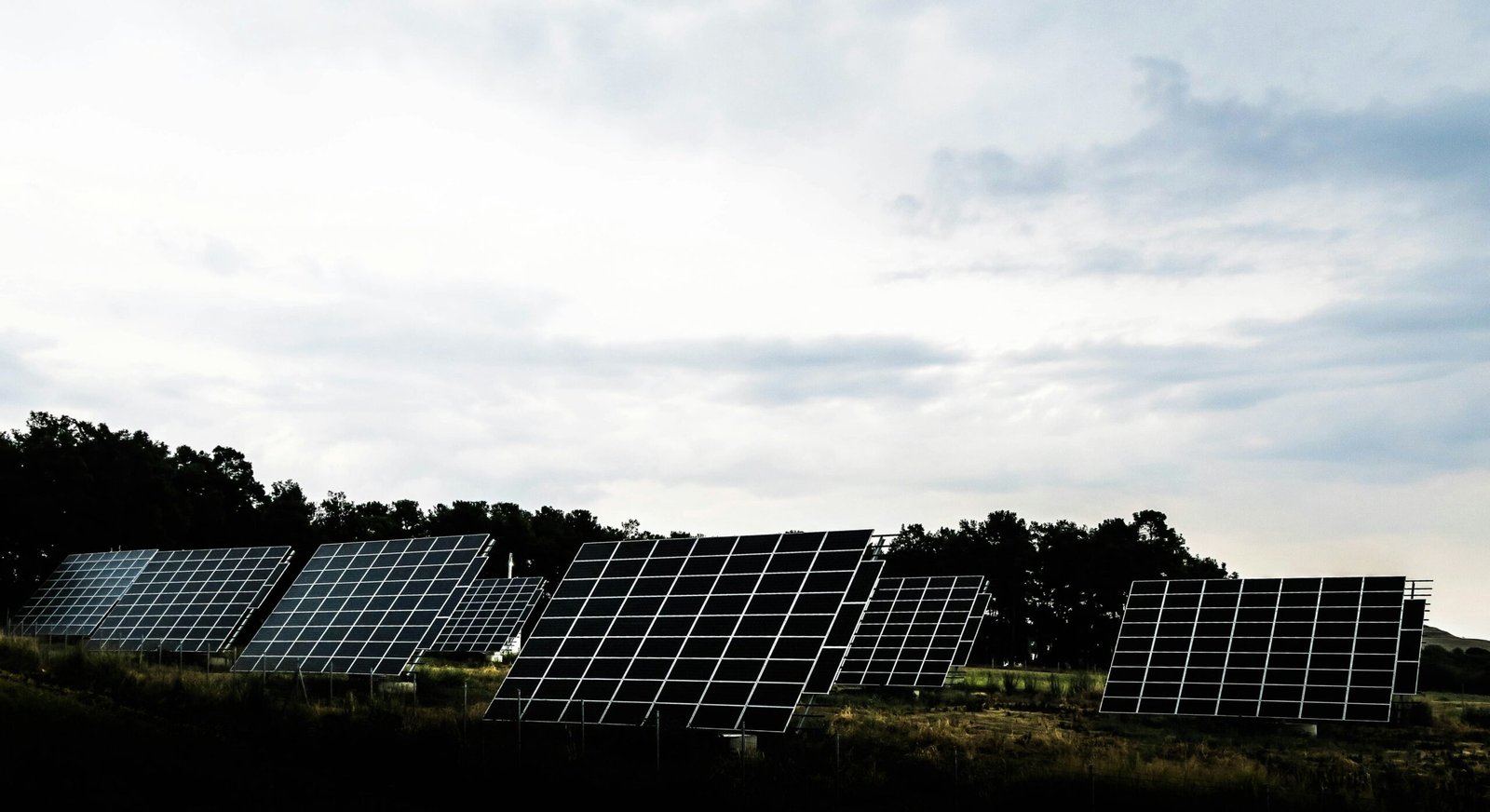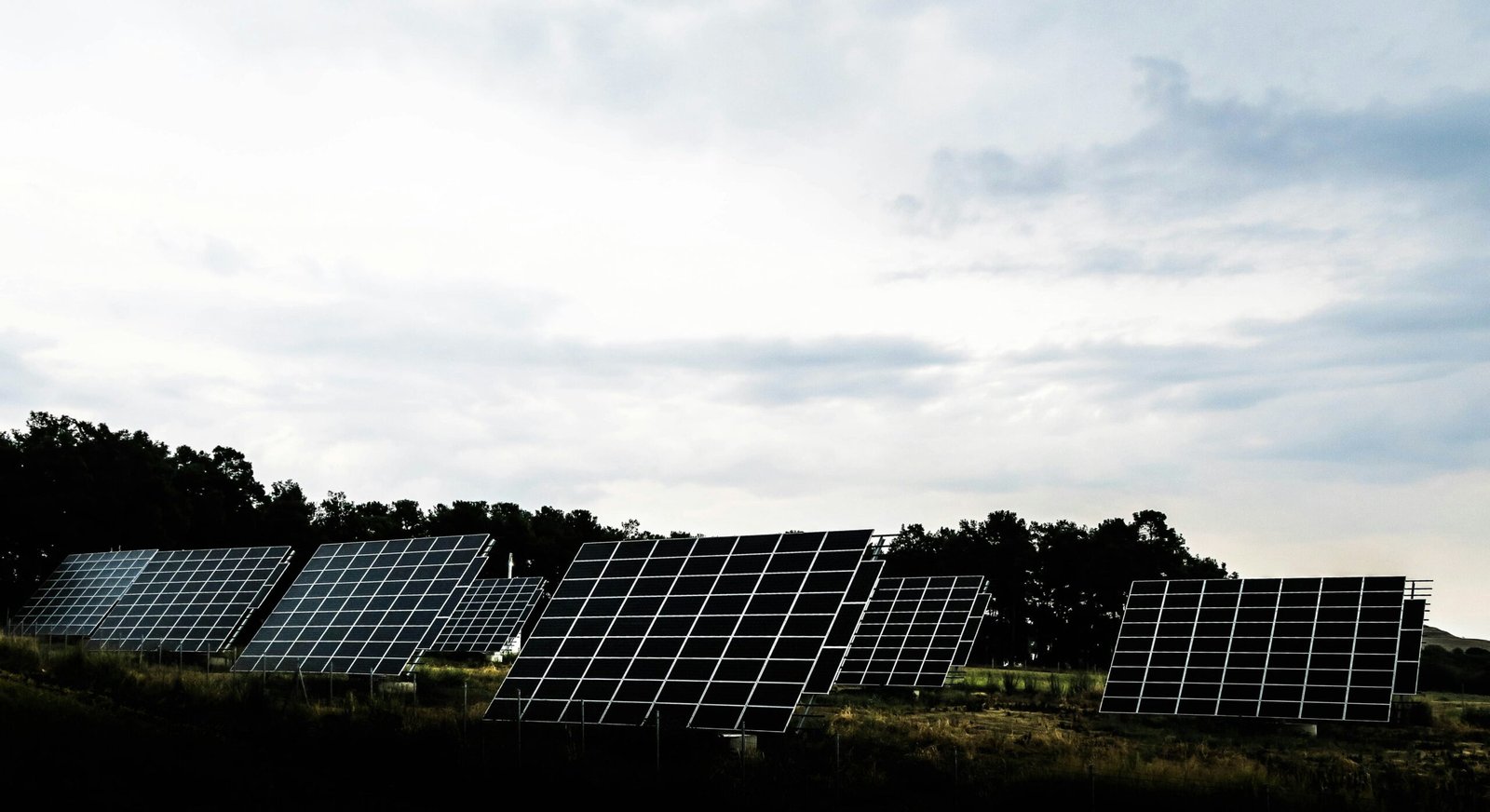Introduction to Automated Waterless Cleaning Robots
The advent of automated waterless cleaning robots marks a significant stride in the evolution of cleaning technologies, particularly within the renewable energy sector. Companies like Taypro have developed advanced models that integrate state-of-the-art robotics and artificial intelligence to maintain solar panels efficiently. This technology represents a paradigm shift from traditional manual cleaning methods, which are labor-intensive and resource-consuming, towards a more sustainable and economical solution.
Automated waterless cleaning robots utilize sophisticated sensors, cameras, and software algorithms to navigate and clean solar panels with precision. Unlike conventional cleaning techniques that often require copious amounts of water and detergents, these robots eliminate water usage, making them an environmentally friendly option. This is particularly essential in arid regions where water conservation is paramount. The robots can operate autonomously, often powered by the very solar panels they clean, ensuring sustained performance with minimal human intervention.
The rise of automation and sustainability in the industry is not merely a trend but a necessity. As solar plants grow in scale and number globally, maintaining peak efficiency in energy production becomes a logistical challenge. Manual cleaning is not only laborious but also costly due to the regular requirement of manpower and interruptions in energy production. A solar panel cleaning system that incorporates automated waterless technology mitigates these shortcomings, ensuring that the photovoltaic surfaces remain clean without significant downtime or operational disruptions.
Moreover, the integration of such advanced cleaning systems aligns with broader environmental goals by reducing carbon footprints associated with maintenance activities. Automated waterless cleaning robots contribute significantly to the financial and operational efficiency of solar plants, setting a new benchmark in solar plant maintenance. As we delve further into the cost benefits in the subsequent sections, the role of companies like Taypro in pioneering these solutions underscores the transformative potential of innovation in maintaining sustainable energy sources.
Understanding the ROI of Taypro’s Cleaning Robots
Return on Investment (ROI) is a critical metric for evaluating the efficacy and financial advantage of any technological investment. When it comes to Taypro’s solar panel cleaning robots, understanding the ROI involves comparing the initial expenditure against traditional cleaning methods, considering both direct and indirect savings.
Traditional solar panel cleaning systems often rely on manual labor, requiring frequent hiring of specialized personnel, costly equipment, and significant water usage. Over time, these expenses accumulate, reducing net savings from energy production. By contrast, Taypro’s solar panel cleaning robots operate autonomously and without water, negating the need for manual intervention and reducing ongoing operational costs.
An illustrative case study from a 50-megawatt solar plant underscores the financial benefits of Taypro’s technology. After integrating Taypro’s cleaning robots, the plant reported a 3% increase in energy output efficiency due to more consistent and thorough cleaning. With an initial investment of $200,000 in the robotic systems, the plant observed monthly savings of approximately $15,000 in labor and water costs, leading to an ROI of 90% within the first year.
Further statistical analysis reveals a broader pattern across different installations. For example, after transitioning to Taypro’s automated solution, a mid-sized solar farm noted a 25% decrease in overall maintenance expenses. While the upfront cost of acquiring the robots may seem substantial, typically ranging from $1,000 to $2,000 per unit depending on the system’s complexity, these savings significantly enhance long-term financial outlooks.
Moreover, Taypro’s solar panel cleaning robots contribute to a reduction in water usage by up to 200,000 liters annually per 1-megawatt installation. This not only results in considerable environmental benefit but also aligns with corporate sustainability goals, further enhancing the value proposition. By consistently ensuring optimal panel performance, Taypro’s solution ensures that solar plants maximize their energy harvest, thereby accelerating the timeline to recoup the initial investment.
Such data asserts that integrating Taypro’s innovative solar panel cleaning service into solar plant maintenance routines yields substantial financial and environmental returns.
Significant Reduction in Labor Costs
Employing Taypro’s waterless cleaning robots for solar panel maintenance presents a noteworthy reduction in labor costs. Traditional cleaning methods require human cleaning staff, whose expenses comprise not just wages, but also benefits, training, and supervision. On average, a solar panel cleaning service might employ multiple workers, each earning around $1 to $5 per hour. With benefits and additional overhead, the costs can quickly accumulate. For a solar plant requiring frequent cleaning, this can translate into substantial expenditures over time.
Besides, there are hidden costs associated with employing human labor. Training new staff to operate the cleaning systems and ensuring they adhere to safety protocols represents a recurring investment. Supervising staff to maintain efficiency and reduce errors further inflates the total cost. Inefficiencies, human errors, and the inherent limitations linked to manual labor can significantly impact both operational costs and the efficiency of the solar panel cleaning system.
Conversely, the introduction of Taypro’s waterless cleaning robots into solar plant maintenance transforms this cost dynamic. These robots, designed for operational efficiency, significantly reduce the need for human intervention. The initial investment in these automated systems, though higher upfront, results in long-term savings. With reduced labor costs, the expense of operating the solar panel cleaning system decreases markedly. Additionally, these robots boast reliability and consistency, optimizing the maintenance process.
The long-term savings are undoubtedly significant. Incorporating automated systems eliminates ongoing training, supervisory, and wage-related expenses. However, when comparing these to the relative costs of automated solutions via a detailed financial model, the fiscal benefits become crystal clear. Below is a table showcasing the comparative costs over a five-year period, illustrating potential savings achieved with Taypro robots.
| Cost Element | Human Labor | Taypro Robots |
|---|---|---|
| Initial Investment | $5,000 | $50,000 |
| Annual Operational Costs | $30,000 | $5,000 |
| Training and Supervision | $10,000 | $0 |
| Total (5 years) | $175,000 | $75,000 |
The data clearly demonstrate that over a five-year period, Taypro’s automated waterless cleaning robots provide significant cost benefits. Enhanced efficiency and a substantial reduction in labor-related expenses make these robots a prudent investment for any solar panel cleaning service seeking to optimize its maintenance operations.
Taypro’s solar panel cleaning robots represent a significant advancement in the field of solar plant maintenance, offering unparalleled cleaning efficiency and coverage. Equipped with state-of-the-art technology, these robots ensure precision cleaning, thereby consistently maintaining the optimal performance of solar panels. Unlike manual cleaning methods, which can be prone to human error and inconsistencies, Taypro’s robots deliver uniform quality across all panels, regardless of environmental or operational conditions.
Enhanced Cleaning Efficiency and Coverage
The technological capabilities of Taypro’s solar panel cleaning system are particularly noteworthy. Designed to operate continuously without fatigue, these robots can handle extensive cleaning tasks with unwavering efficiency. The automated nature of the robots allows for scheduled cleanings, ensuring that solar panels are maintained at peak performance levels without the need for constant human oversight. This not only reduces labor costs but also minimizes the risks associated with manual cleaning, such as potential damage to the panels or personal injuries.
Precision cleaning is one of the standout features of Taypro’s automated system. The robots are engineered to detect and adapt to the unique contours and specifications of different solar panels, ensuring that every inch is thoroughly cleaned. This high level of accuracy reduces the likelihood of dirt and debris accumulating on the panels, which can impede their efficiency and lead to increased energy costs. Consistent performance means that the need for repeat cleanings is significantly minimized, translating directly into cost savings for solar plant operators.
Overall, the integration of Taypro’s solar panel cleaning robots into a solar plant maintenance regimen can yield substantial economic benefits. By automating the cleaning process, plant operators can reduce downtime, lower maintenance costs, and enhance the longevity and efficiency of their solar panels. This ultimately contributes to a more sustainable and cost-effective energy production model, aligning with the broader goals of renewable energy utilization. As the global emphasis on green energy continues to rise, the adoption of advanced cleaning technologies like Taypro’s will undoubtedly play a crucial role in optimizing solar panel performance and cost efficiency.
Minimized Maintenance and Operational Costs
In assessing the maintenance and operational costs associated with Taypro’s solar panel cleaning system, it becomes evident that these automated, waterless cleaning robots present a viable solution to traditional cleaning methods. Unlike conventional equipment that requires frequent labor, water usage, and periodic repairs, Taypro’s solar panel cleaning robots are designed for durability and reduced maintenance, translating to significant cost savings over time.
The robust design of Taypro’s cleaning robots, built to withstand the harsh environmental conditions typical of solar installations, extends their longevity. These robots have a maintenance schedule that requires minimal intervention, primarily consisting of routine checks and occasional software updates. This contrasts sharply with traditional cleaning systems, which often necessitate regular and extensive maintenance due to the wear and tear from water and abrasive cleaning materials.
Operational cost savings are further magnified by the waterless feature of Taypro’s system. Traditional solar panel cleaning services typically rely heavily on water, incurring substantial water bills and generating waste that requires proper disposal. By eliminating the dependency on water, Taypro’s solution not only reduces these recurring costs but also aligns with sustainable practices, which is increasingly becoming a priority in the renewable energy sector.
A comparative analysis shows that while the initial investment in an automated waterless cleaning robot may be higher than traditional methods, the reduced need for maintenance, combined with the elimination of water-related costs, results in lower overall expenses. This efficiency is reflected in reduced labor costs and longer intervals between service routines, ensuring that the solar plant maintenance remains consistent and cost-effective.
Adopting Taypro’s solar panel cleaning system means embracing an innovative approach that underscores efficiency and sustainability, ultimately fostering significant long-term savings. By mitigating the operational and maintenance burdens frequently associated with traditional cleaning methods, Taypro’s waterless cleaning robots represent a forward-thinking investment in the future of solar energy maintenance.
Environmental and Sustainability Savings
One of the most compelling benefits of utilizing waterless cleaning robots, such as those offered by Taypro, lies in their significant environmental advantages. Traditional cleaning methods for solar panels often involve substantial water usage, which can be both costly and wasteful. By contrast, Taypro’s automated solar panel cleaning system employs a waterless technology that drastically curtails water consumption. This reduction not only conserves a precious natural resource but also leads to noticeable cost savings, especially in regions where water is scarce and expensive.
In addition to diminished water usage, these cleaning robots are designed to be energy-efficient. Traditional cleaning methods may require the operational expenditure of electricity to pump and heat water. By employing robots that require minimal electrical input, the overall energy footprint is reduced. This reduced energy consumption, in turn, reflects positively on your energy bills, constructing a financially prudent strategy for maintaining your solar plant.
Lower chemical usage is another salient feature of Taypro’s solar panel cleaning system. Traditional cleaning methods often involve harsh chemicals that can be harmful to both the environment and the solar panels themselves. With a waterless mechanism, the need for these chemicals is eliminated. This translates into direct cost savings on chemical purchases and mitigates the environmental impact of chemical runoff, further enhancing the sustainability profile of your solar panel maintenance practices.
Beyond immediate cost savings, opting for environmentally friendly maintenance solutions such as waterless cleaning robots can also open doors to various incentives and rebates. Many governmental and non-governmental organizations offer financial incentives for businesses that adopt sustainable technologies. Utilizing a solar panel cleaning service that prioritizes water conservation and energy efficiency could qualify your business for these programs, thereby amplifying the cost benefits.
In summary, the environmental and sustainability advantages of Taypro’s automated waterless cleaning robots are multifaceted. Reduced water and energy usage, along with minimal reliance on chemicals, not only protect the environment but also contribute to significant cost savings. Moreover, the potential for sustainability incentives further enhances the financial viability of this innovative technology.
Customer Case Studies and Testimonials
Integrating innovative technology into existing operations can often seem daunting. However, numerous businesses have successfully adopted Taypro’s solar panel cleaning robots and experienced tangible cost benefits. One such example is TPREL, a medium-sized solar plant operating in the Prayagraj. Prior to adopting Taypro’s solar panel cleaning system, TPREL faced high maintenance costs due to frequent manual cleaning, water usage, and downtime. According to the company’s site manager, “Switching to Taypro’s automated waterless cleaning robots has significantly reduced our operational expenses. We have seen a 20% decrease in maintenance costs and a 5% increase in energy efficiency without the need for water.” This experience demonstrates how streamlined operations and reduced labor dependences can lead to financial improvements.
Another notable case study comes from USV, a medium-scale solar farm in Maharashtra. The general manager shared that, “Before we partnered with Taypro for our solar panel cleaning service, our overhead costs were overwhelming. The automated system not only cut down our expenditure on water and labor but also minimized the risk of panel damage.” This testimonial highlights the long-term savings and operational efficiency enabled by implementing advanced cleaning technology.
Moreover, Avaada reveals a similar success story. Through the implementation of Taypro’s automated waterless cleaning system, they managed to enhance their maintenance protocols substantially. The Operations Head, in a detailed report, mentioned, “Our adoption of these cleaning robots has been transformative. We’ve observed a 2.5% boost in our overall plant efficiency, which translates directly to our bottom line.” Such empirical evidence underscores the substantial financial impact and reliability of automated solutions in maintaining optimal solar panel performance.
These testimonials and data from respected industry players clearly illustrate the versatile applications and financial benefits of Taypro’s innovative solar panel cleaning robots. Businesses can look to these success stories as motivation to explore and adopt these advanced systems, ensuring both efficiency and cost-effectiveness in their solar plant maintenance strategies.
As we have explored throughout this blog, the financial advantages of employing automated waterless cleaning robots for solar panel maintenance are significant. These cutting-edge robots, specifically those offered by Taypro, provide a cost-effective solution to enhance the efficiency and longevity of your solar installations. By integrating these solar panel cleaning systems, businesses can achieve substantial savings on water consumption and labor costs, while also reducing system downtime and maintaining optimal energy output.
Automated cleaning robots eliminate the need for manual cleaning services, which are often labor-intensive and expensive. The robots operate efficiently and can be scheduled to clean at optimal times, ensuring that your solar panels remain at peak performance without disrupting day-to-day operations. Moreover, Taypro’s technology emphasizes sustainability by avoiding water usage, making it an environmentally friendly choice that aligns with green energy initiatives.
For businesses vested in solar energy, investing in Taypro’s automated waterless cleaning robots can result in significant operational efficiency and financial savings. These systems ensure that solar plants remain clean, thus enabling continuous energy generation at optimal levels. The upfront cost of such technology is quickly offset by the reduction in manual labor expenses, the increased efficiency of the solar panels, and the extended life of the panels due to reduced mechanical wear and tear.
We encourage businesses to consider the strategic benefits of incorporating these innovative cleaning solutions. By doing so, you not only enhance your solar power system’s performance but also contribute positively to your bottom line and sustainability goals. For more detailed information or to discuss how Taypro’s solar panel cleaning service can be tailored to your specific needs, please contact Taypro.




